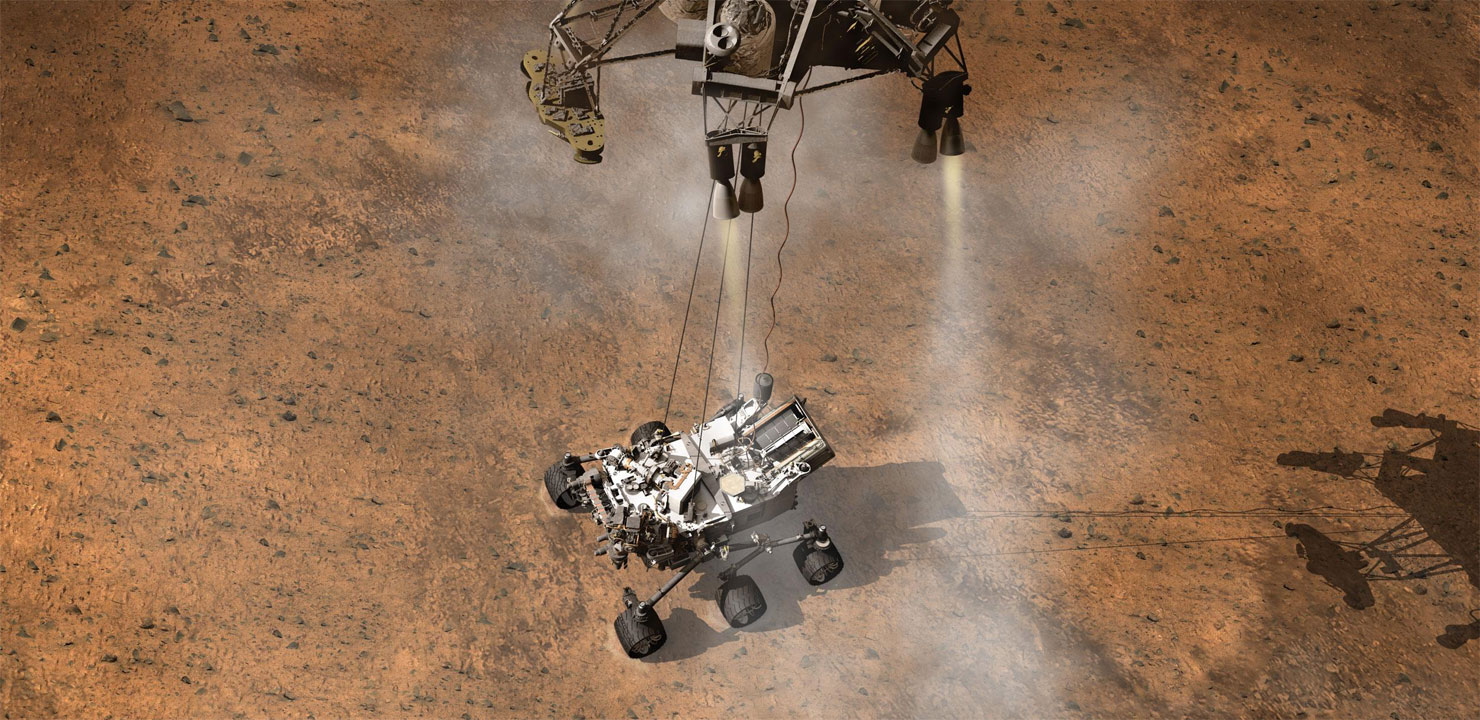
Curiosity to Explore Mars
August 2012 :
The next generation of Mars exploration has already begun.
On November 26, 2011, an Atlas V rocket lifted NASA’s Mars Science Laboratory from Cape Canaveral for just over an eight-month journey to Mars. Soon, on August 6, at 1:31am EDT, a new rover called Curiosity will land in Mars’ Gale Crater to begin another era in exploration of this world.
Curiosity will follow in the “footsteps” of two other famous rovers, Spirit and Opportunity. While their missions were primarily geologic, Curiosity will be searching for evidence of life, both past and hopefully present. Either of these discoveries would most definitely change our perspective about our place in the universe. It would be an event of historic proportions should it come to fruition.
Curiosity is a 1,984 pound rover the size of a small SUV. It is 10 feet long, 8.8 feet wide, and stands 7.2 feet tall with its mast. Here’s an image of the vehicle in a clean room being prepped for the mission. (Note the technician for scale.) Curiosity contains a variety of scientific instruments to help with its exploration as it “roves” the Martian terrain under the direction of controllers back here on Earth.
Though the initial mission is scheduled to last almost two years, Spirit and Opportunity survived for eight! So who knows what the future holds in store, especially if a major discovery is made early in the mission.
I’d also like to note that Jim Bell, the lead scientist for Curiosity’s cameras, is a former member of Skyscrapers, Inc., The Amateur Astronomical Society of Rhode Island. Bell was also responsible for the cameras aboard Spirit and Opportunity.
There are several websites that provide a wealth of information about this very important mission.
- MSL Curiosity home page
- MSL Curiosity launch video
- “7 Minutes of Terror” video simulation of the entry, descent and landing
- This awesome animation shows the mission from leaving Earth orbit to the landing on Mars and conducting some experiments.
- Follow Your Curiosity allows you to explore 3D models of the rover and it's landing site Gale Crater. Also try to land your own Mars rover with a free game on Xbox Kinect.
- Eyes on the Solar System lets you follow the entry, descent, and landing via a computer simulation made by JPL.
We will all be anxiously awaiting news of Curiosity’s successful landing in Gale Crater as it begins a new chapter in the exploration of Mars and the search for evidence of life on the planet.
Curiosity's landing will likely be broadcast live via JPL's UStream channels: http://www.ustream.tv/nasajpl http://www.ustream.tv/nasajpl2
NASA/JPL-Caltech



